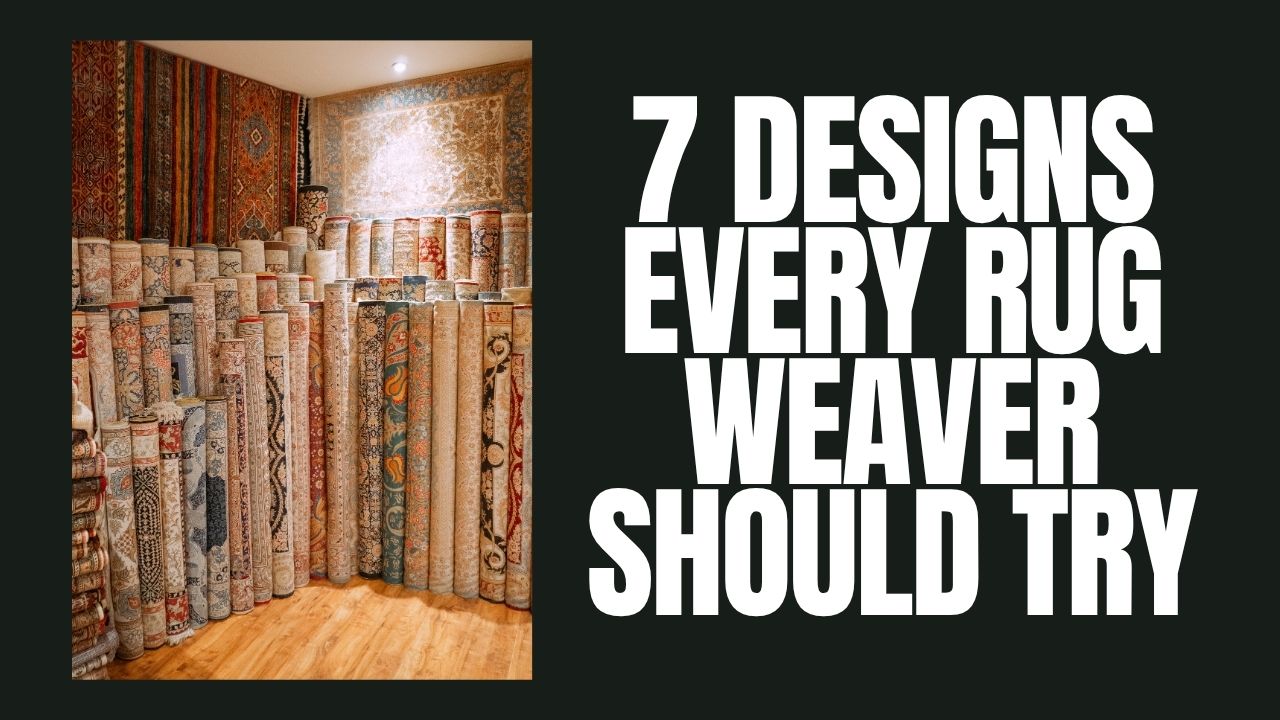Rug weaving is more than just a craft — it’s a timeless art form that tells stories, adds warmth to homes, and reflects cultural heritage. Whether you’re a beginner or an experienced weaver, exploring new rug designs can enhance your skillset, inspire creativity, and elevate your finished pieces. In this article, we’ll explore 7 unique rug designs every rug weaver should try, from traditional techniques to modern styles that make your rugs stand out.
Why Design Matters in Rug Weaving
Rug design isn’t just about appearance — it’s about functionality, texture, symmetry, and storytelling. Different rug designs can:
- Change the feel of a space
- Influence durability and wear
- Reflect cultural traditions
- Enhance your technical weaving abilities
Trying various patterns also helps you find your signature style as a weaver.
1. Geometric Diamond Pattern
One of the most iconic and beginner-friendly designs, the diamond pattern creates a structured and visually appealing look.
- Technique: Alternating light and dark yarns
- Style: Symmetrical, clean, modern or tribal
- Best For: Entryway rugs, boho interiors, wall hangings
Tip: Use a bold contrasting color for the diamond to really make it pop.
2. Kilim-Style Flat Weave
Inspired by Turkish and Persian traditions, kilim designs feature flat weaves with intricate motifs like hooks, medallions, and zigzags.
- Technique: Weft-faced weaving with slits between colors
- Style: Cultural, ethnic, and detailed
- Best For: Area rugs, hall runners, decorative pieces
Tip: Start with small motifs and work up to larger complex patterns as you gain confidence.
3. Checkerboard Grid
The checkerboard design is a bold, graphic style that brings a contemporary feel to any room.
- Technique: Alternating color blocks in a grid formation
- Style: Minimalist, retro, and modern
- Best For: Living rooms, playrooms, or artistic studio spaces
Tip: Choose colors with high contrast (e.g., black and white or navy and tan) for maximum impact.
4. Ombre or Gradient Fade
Create a subtle and elegant effect using a fade or ombre technique, where colors gradually transition across the rug.
- Technique: Blending yarn colors using shading techniques
- Style: Soft, serene, modern
- Best For: Bedrooms, meditation spaces, or spa areas
Tip: Use three or more shades of the same color family for a smooth gradient look.
5. Traditional Navajo-Inspired Zigzag
This bold and rhythmic zigzag pattern draws from Native American traditions and offers strong visual movement.
- Technique: Stepped or jagged weft changes in contrasting colors
- Style: Traditional, ethnic, vibrant
- Best For: Statement pieces, rustic cabins, or southwestern décor
Tip: Stick to earthy tones like terracotta, turquoise, and cream to stay authentic to Navajo palettes.
6. Minimalist Stripe Layout
Sometimes less is more. A simple stripe design can be very elegant, especially when experimenting with yarn texture and weight.
- Technique: Horizontal or vertical stripes using alternating rows
- Style: Clean, modern, Scandinavian
- Best For: Kitchens, hallway runners, or office floors
Tip: Use neutral tones with one bold color stripe to create visual interest.
7. Abstract Freeform Weaving
This design allows the most artistic freedom, incorporating irregular shapes, textures, and even yarn scraps.
- Technique: Freestyle weaving, looped or tufted textures
- Style: Artistic, expressive, experimental
- Best For: Wall art rugs, gallery pieces, or bohemian décor
Tip: Combine different types of yarn (e.g., wool, rope, cotton) for texture variation and depth.
Comparison Table: Rug Designs Overview
| Design Style | Skill Level | Design Impact | Best Use |
|---|---|---|---|
| Geometric Diamond | Beginner | Bold and graphic | Entryways, wall hangings |
| Kilim-Style Flat Weave | Intermediate | Cultural, detailed | Area rugs, runners |
| Checkerboard Grid | Beginner | High contrast, modern | Living rooms, playrooms |
| Ombre/Gradient | Intermediate | Soft, elegant | Bedrooms, yoga or spa spaces |
| Navajo Zigzag | Advanced | Ethnic and vibrant | Statement rugs, rustic interiors |
| Minimalist Stripes | Beginner | Clean and modern | Hallways, kitchens |
| Abstract Freeform | All Levels | Creative, textured | Art rugs, bohemian rooms |
How to Choose the Right Rug Design
Before starting your next rug project, ask yourself:
- Where will the rug be used? (high-traffic vs. decorative)
- What mood or story do you want to convey?
- How much time or complexity are you ready to handle?
- What materials do you have access to?
By aligning your design choice with your space and skill level, you’ll produce more satisfying and polished results.
FAQs
What design is best for beginners in rug weaving?
The checkerboard or diamond pattern is best for beginners due to its straightforward technique and minimal color changes.
Can I mix rug designs in one project?
Absolutely! Combining patterns like stripes and ombre or geometric with abstract can create custom, layered visual appeal.
Do I need special tools for complex rug designs?
While basic looms and needles work for most, some techniques like punch needle or tufting may require specific tools.
Conclusion
Rug weaving is an art rich with possibility, and trying different designs helps you evolve both technically and creatively. Whether you’re sticking to traditional patterns like kilim and Navajo zigzags or exploring freeform abstract weaves, each design adds a new dimension to your skill set. These 7 must-try rug designs offer something for every weaver — from the practical to the purely decorative.
Embrace the challenge, experiment with textures and colors, and let your woven rugs become a canvas for your creativity.



